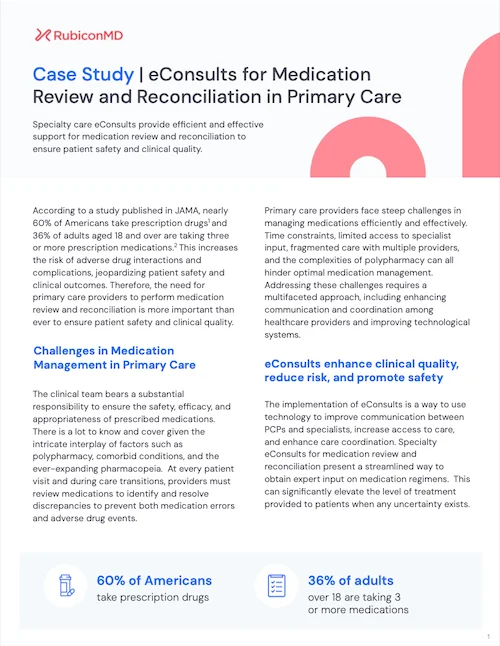eConsult Transcript
PCP submission
33 yo M with foot rash that began one week ago. pt admits he was in Gainesville at the blue springs, admits he walked in the water with sandals, also played volleyball on the river /sand barefoot. patient admits that out of 14 people one other person with similar rash, denies wife has same rash. admits to itchiness, burning, and erythema. pt states it began as small red dots and grew and spread out along his feet. also has rash on right hand. patient has tried topical Benadryl and self prescribed PO antibiotic of cefadroxil 500mg BID for the last 3 days without relief of symptoms. (pt states antibiotic from venezuela). (please see picture attached)
suspect Cutaneous larva migrans, considering topical or PO ivermectin. recommendations appreciated, thank you!
Specialist response
hi there, yes you are totally right! this is cutaneous larva migrans. how cute. Usually, i consider anthelmintics such as tiabendazole, albendazole, mebendazole and ivermectin are used. Topical thiabendazole is considered the treatment of choice for early, localized lesions. I also do liquid nitrogen to the advancing edge to kill the worm. you may need clobetasol and antihistamines to help w the itch. it will die and get removed by the body eventually. no need for surgery. let me know if you have further questions. —————- What is cutaneous larva migrans? Cutaneous larva migrans is a parasitic skin infection caused by hookworm larvae that usually infest cats, dogs and other animals. Humans can be infected with the larvae by walking barefoot on sandy beaches or contacting moist soft soil that have been contaminated with animal faeces. It is also known as creeping eruption as once infected, the larvae migrate under the skin’s surface and cause itchy red lines or tracks. What causes cutaneous larva migrans? Many types of hookworm can cause cutaneous larva migrans. Common causes are: Ankylostoma braziliense: hookworm of wild and domestic dogs and cats found in central and southern US, Central and South America, and the Caribbean Ankylostoma caninum: dog hookworm found in Australia Uncinaria stenocephala: dog hookworm found in Europe Bunostomum phlebotomum:cattle hookworm Who is at risk of cutaneous larva migrans? People of all ages, sex and race can be affected by cutaneous larva migrans if they have been exposed to hookworm larvae. It is most commonly found in tropical or subtropical geographic locations. Groups at risk include those with occupations or hobbies that bring them into contact with warm, moist, sandy soil. These may include: Barefoot beachcombers and sunbathers Children in sandpits Farmers Gardeners Plumbers Hunters Electricians Carpenters Pest exterminators Most larva migrans seen in New Zealand arises during overseas holidays, but it has rarely been reported in those who have never been out of the country. How does hookworm infection occur? Parasite eggs are passed in the faeces of infested animals to warm, moist, sandy soil, where the larvae hatch. On contact with human skin, the larvae can penetrate through hair follicles, cracks or even intact skin to infect the human host. Between a few days and a few months after the initial infection, the larvae migrate beneath the skin. In an animal host the larvae are able to penetrate the deeper layers of the skin (the dermis) and infect the blood and lymphatic system. Once in the intestine they mature sexually to create more eggs that are then excreted to start the cycle again. However, in a human host, the larvae are unable to penetrate the basement membrane to invade the dermis so the disease remains confined to the outer layers of the skin. What are the signs and symptoms of cutaneous larva migrans? A non-specific eruption occurs at the site of penetration of the hookworm larvae. There may be a tingling or prickling sensation within 30 minutes of the larvae penetrating. The larvae can then either lie dormant for weeks or months or immediately begin creeping activity that create 2-3mm wide, snakelike tracks stretching 3-4cm from the penetration site. These are slightly raised, flesh-coloured or pink and cause intense itching. Tracks advance a few millimetres to a few centimetres daily and if many larvae are involved a disorganised series of loops and tortuous tracks may form. Sites most commonly affected by cutaneous larva migrans are the feet, spaces between the toes, hands, knees and buttocks. What treatment is available for cutaneous larva migrans? Cutaneous larva migrans is self-limiting. Humans are an accidental and “dead-end” host so the hookworm larvae eventually die. The natural duration of the disease varies considerably depending on the species of larvae involved. In most cases, lesions will resolve without treatment within 4-8 weeks. However, effective treatment is available to shorten the course of the disease. Anthelmintics such as tiabendazole, albendazole, mebendazole and ivermectin are used. Topical thiabendazole is considered the treatment of choice for early, localized lesions. Oral treatment is given when the cutaneous larva migrans is widespread or topical treatment has failed. Itching is considerably reduced within 24-48 hours of starting antihelmintic treatment and within 1 week most lesions/tracts resolved. If these are unavailable, physical treatments such as liquid nitrogen cryotherapy or carbon dioxide laser may be used to destroy the larvae. Antihistamines and topical corticosteroids may also be used with anthelminthics to provide symptomatic relief of itch. Secondary bacterial infection may require treatment with appropriate antibiotics.
